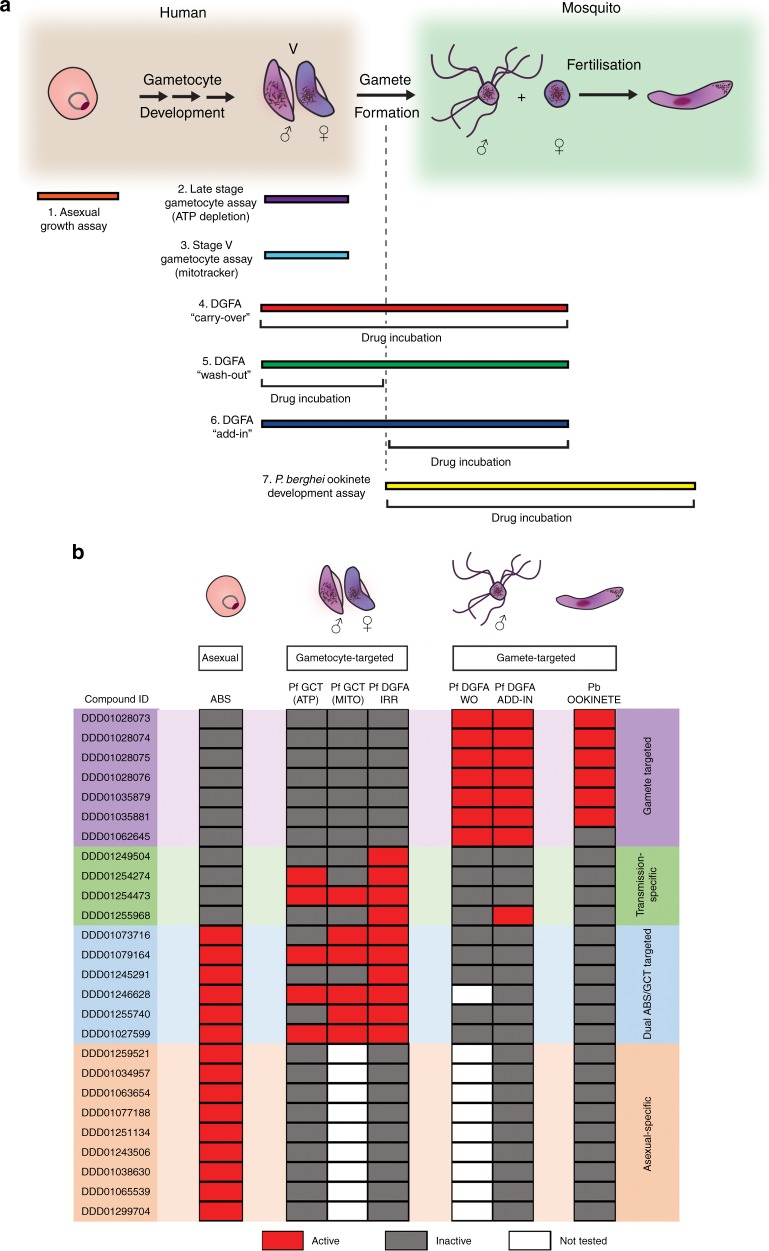Fig. 2.
Profiling the transmission blocking properties of selected compounds. a 26 compounds were profiled in seven assays that interrogate different ranges of parasite cell biology (represented by position and length of coloured bars). Ability to prevent asexual replication was tested by asexual growth assay20. Ability to inhibit the metabolic viability of stage IV/V gametocytes (Pf GCT) was tested by late stage gametocyte ATP depletion assay (ATP)43 and stage V gametocyte by mitotracker assay (MITO)7. By varying compound incubation period, the carry-over/wash-out (WO)/add-in Pf DGFA assays permit discrimination between gametocyte- and gamete-targeted activity23. The P. berghei ookinete development assay37 tests activity against early mosquito stage parasites and cross-reactivity to P. berghei. b Table summarising outcome of compound profiling. Compounds fell into four categories: gamete-targeted (purple); transmission-specific (gametocyte-targeted, green); dual asexual/gametocyte targeted (blue); asexual-specific (orange). Red blocks indicate compound was active in respective assay (IC50 > highest assay concentration: 12.5 µM asexual; 10 µM ATP; 25 µM MITO; 12.5 µM WO; 10 µM Add-in; >12.5 µM Pb Ookinete), grey indicates inactive and white indicates not tested. The exception being the Pf DGFA columns: compounds that were irreversible (IRR), e.g. active in carry-over and wash-out (WO) were designated gametocyte-active; compounds that lost activity in wash-out format were designated gamete-active

